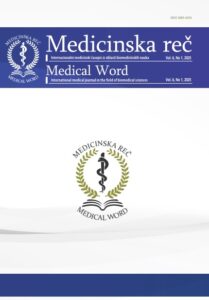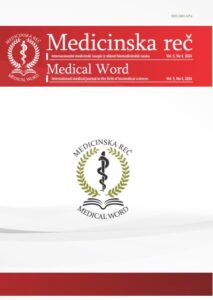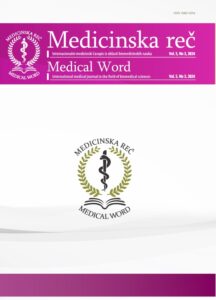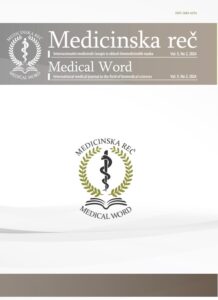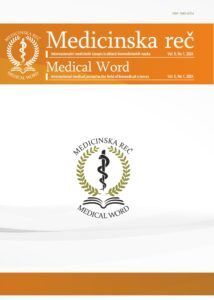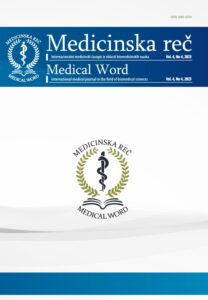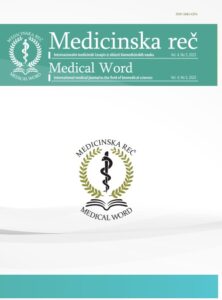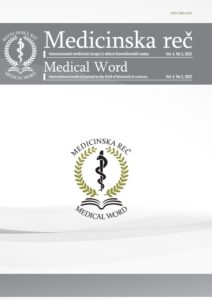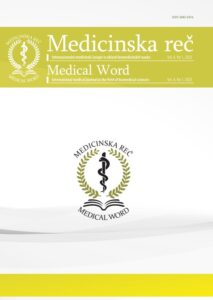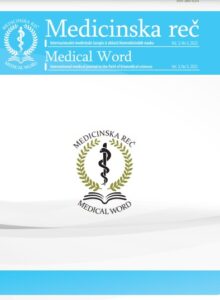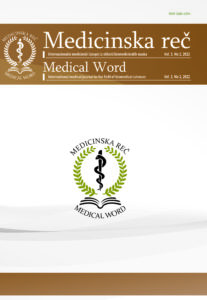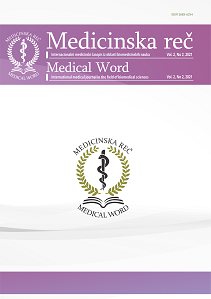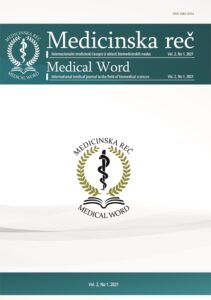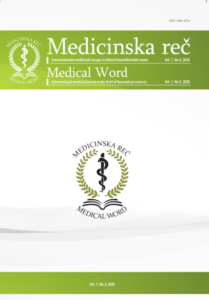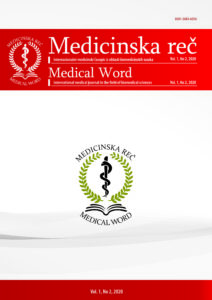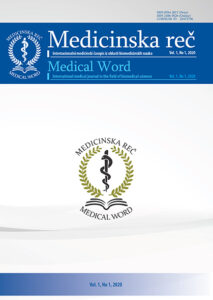Employees organization/structure and functioning of the stem cell transplant center – how to optimize the transplant program?
Milena Todorović Balint, Bela Balint, Irena Đunić, Mihailo Smiljanić, Biljana Mihaljević
Med Reč / Med Word 2020; 1(3): 109–113
https://doi.org/10.5937/medrec2003109T
Abstract
There are four stem cell (SC) transplant centers in Serbia that carry out their activities within the European Group for Blood and Marrow Transplantation (EBMT). They are positioned in the Clinical Center of Serbia, Military Medical Academy, Institute for Mother and Child Healthcare “Dr. Vukan Čupić” and in the Clinical Center of Vojvodina. The aim of this paper is to analyze the basic approaches and aspects, as well as main parameters and guidelines – related to the optimization of the functioning of SC transplantation centers. The existence of a competent and motivated professional employees of the transplant center, as well as an adequate operational locality/area and up to date equipments are imperative for the successful performance of this specific and complex procedure. The current tendency – and in the near future an obligation or requirement – is for each transplant center within the EBMT to be fully staffed and structurally equipped and ready to be included in the accreditation process by the Joint Accreditation Committee International. Begining the accreditation process implies, in addition to the implementation of education and training of employees, the establishment and implementation of specific quality control standards (ISO 9001: 2015, ISO 13485, ISO 13485: 2016, ISO 15189: 2007, ISO 17025, ISO / IEC 7025: 2005). The activity indicators of every transplant center have to be transparent and presented by: the number of treated patients, the rate of transplant mortality, the duration and quality of patient’s lives. Also important parameters are various methods of economic analyses – different specific cost-benefit analyses. In conclusion, in order to achieve consistent/comparable therapeutic effects and outcomes for patients globally – it is imperative that transplant centers and related organizations work together on the quality system assurance, using a continuous and adequate “educational and organizational-structural models”.
Key words: stem cells, transplant center, organization, quality assurance
References
- Pravilnik o bližim uslovima za obavljanje zdravstvene delatnosti u zdravstvenim ustanovama i drugim oblicima zdravstvene službe („Službeni glasnik RS”, broj 107/05).
- ISO9001:2015 Quality management systems – Requirements
- ISO 13485:2016 Medical devices – QMS. https://www.iso.org/standard/59752.html
- Medical laboratories -Particular requirements for quality and competence. ISO 15189:2007.
- ISO/IEC 17025:2017. Best ISO 17025 quality manual. www.globalmanagergroup.com
- ISO: General requirements for the competence of testing and calibration laboratories. ISO/IEC 17025:2005.
- Nassar A, Srivastava A, Hashmi SK, Aljurf M. Establishing an HSCT Program with Limited Resources. In: Gluckman E, Niederwieser D, Aljur M, eds. Establishing a Hematopoietic Stem Cell Transplantation Unit. Springer; 2018. ISBN 978-3-319-59358-6 (eBook).
- Thorsteinsdóttir H, Quach U, Martin DK, Daar AS, Singer PA. Introduction: promoting global health through biotechnology. Nat Biotechnol 2004; 22: 3-7.
- Lee SJ. Outcomes research in hematopoietic cell transplantation. In: Appelbaum FR, Forman SJ, Negrin RS, Blime KG, eds. Thomas’ Hematopoietic Cell Transplantation. 4th ed. Chichester, UK: Wiley-Blackwell; 2004. p. 428-41.
- Yu YB, Gau JP, You JY, Chern HH, Chau WK, Tzeng CH, Ho CH, Hsu HC. Cost-effectiveness of postremission intensive therapy in patients with acute leukemia. Ann Oncol 2006; 18(3): 529-34.
- Imataki O, Kamioka T, Fukuda T, Tanosaki R, Takaue Y. Cost and effectiveness of reduced-intensity and conventional allogeneic hematopoietic stem cell transplantation for acute myelogenous leukemia and myelodysplastic syndrome. Support Care Cancer 2010; 18(12): 1565-9.
- Drummond MF, Sculpher MJ, Torrance GW, et al. Methods for the Economic Evaluation of Health Care Programmes. 3. New York: Oxford University Press; 2005. p. 8-25. p. 38-48. p. 126-133.
- World Health Organization. Basic Documents-48th Ed [Internet]. Geneva: WHO Press; http://apps.who.int/gb/bd
- Stranges E, Russo CA, Friedman B. Procedures with the most rapidly increasing hospital costs, 2004–2007, HCUP Statistical Brief 82. Rockville: Agency for Healthcare Research and Quality. Dec 2009. http://www.hcup-us.ahrq.gov/reports/statbriefs/sb82.pdf
- Griffiths RI, Bass EB, Powe NR, Anderson GF, Goodman S, Wingard JR. Factors influencing third party payer costs for allogeneic BMT. Bone Marrow Transplant 1993; 12(1): 43-8.
- Preussler JM, Denzen EM, Majhail NS. Costs and cost-effectiveness of hematopoietic cell transplantation. Biol Blood Marrow Transplant 2012; 18(11): 1620-8.
- Majhail NS, Mothukuri JM, Macmillan ML, Verneris MR, Orchard PJ, Wagner JE, Weisdorf DJ. Costs of pediatric allogeneic hematopoietic-cell transplantation. Pediatr Blood Cancer 2010; 54(1): 138-43.
- Majhail NS, Mothukuri JM, Brunstein CG, Weisdorf DJ. Costs of hematopoietic cell transplantation: comparison of umbilical cord blood and matched related donor transplantation and the impact of posttransplant complications. Biol Blood Marrow Transplant 2009; 15(5): 564-73.
- Saito AM, Zahrieh D, Cutler C, Ho VT, Antin JH, Soiffer RJ, Alyea EP, Lee SJ. Lower costs associated with hematopoietic cell transplantation using reduced-intensity vs high-dose regimens for hematological malignancy. Bone Marrow Transplant 2007; 40(3): 209-17.
- Rizzo JD, Vogelsang GB, Krumm S, Frink B, Mock V, Bass EB. Outpatient-based bone marrow transplantation for hematologic malignancies: cost saving or cost shifting? J Clin Oncol 1999; 17(9): 2811-8.


